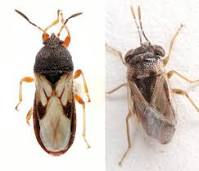Weed Treatment Follow-Up: Flags, Dry Time, and Lawn Care Best Practices
- jamiebellucco
- Jun 2
- 3 min read
Updated: Jun 18

After Weed Patrol applies a professional weed control application, the real work begins. What you do in the days and weeks following a weed control treatment can make all the difference in how quickly unwanted weeds die off and your turf rebounds. When our lawn care service is complete, we place small flags in the lawn to mark treated areas. These weed control flags are required by New York and New Jersey regulations and must remain in place for 24 hours. Once the product has dried, usually just a few hours after application, it's ok to walk on the grass. Follow these post-application weed control tips to maximize results and keep your lawn looking its healthiest.
1. Keep Those Flags Up for 24 Hours

By law in New York and New Jersey, any area where a herbicide or pesticide has been applied must be marked with a visible flag or sign for 24 hours. These flags protect pets, people, and sensitive plants from coming into contact with wet products. When our technician finishes your weed control application, you’ll see flags in both the front and back yard.
Do not remove the flags for the full 24-hour period.
Once the product has dried (usually within a few hours), you can safely walk on the grass, but keep the flags up until the 24-hour requirement is met.
Leaving the flags up also helps prevent accidental overspray to flower beds, vegetable gardens, or newly planted areas.
2. Wait to Mow for 48–72 Hours
Most post-emergent herbicides used in professional lawn care services require time to adhere to and penetrate weed foliage. Mowing too soon can remove treated leaf tissue before the chemical reaches the roots.
Wait at least 48–72 hours before mowing again to ensure the herbicide has time to work.
When you do mow, set your mower deck to 3.5 inches—this height helps shade the soil, reduces stress on your turfgrass, and allows the treatment to remain intact if any weeds survive initial contact.
Proper lawn maintenance after a weed control application supports healthier, thicker grass that resists future weed pressure.
3. Water the Lawn One Day After Treatment

Your technician relies on natural drying immediately after the weed control application. To “water in” any residual herbicide and activate its movement into the weeds’ root systems:
Irrigate lightly about 24 hours after application
Use a sprinkler to apply roughly ¼–½ inch of water—enough to wash the product off leaves and start root uptake, but not so much that it washes the product away completely.
After the flags come down (24 hours later), resume your normal irrigation schedule—typically deep, infrequent watering early in the morning for optimal lawn health.
4. Minimize Foot Traffic & Activity
Although it’s safe to walk on the lawn once the herbicide has dried (usually a few hours after application), try to limit heavy foot traffic, children playing, or pets running for the first 24 hours. This caution helps:
Prevent knocking off any residual herbicide on leaves before it’s absorbed.
Avoid spreading product onto flower beds, vegetable patches, or other sensitive landscaping areas.
Reduce the risk of skin irritation from stepping on treated leaves that aren’t fully absorbed.
5. Monitor Weed Decline & Be Patient

Visible results vary by weed type—plan on 7–21 days to see full effects from your weed control treatment:
Broadleaf weeds (dandelions, clover): Leaves yellow and wilt in 7–10 days; root systems die back within two weeks.
Grassy weeds (crabgrass, foxtail): Mature grassy weeds may need a second spot treatment after 10–14 days. Look for thinning and browning around day 14.
Perennial weeds (plantain, chickweed): Can reshoot—watch for new growth for up to 30 days and notify us if fresh sprouts appear so we can arrange a follow-up spot treatment.
Avoid a second application too soon; give the herbicide time to migrate into roots. If live weeds persist after 3–4 weeks, just let us know—we’ll schedule that follow-up service at no extra hassle for you.
6. Maintain Proper Mowing, Watering & Cultural Habits
Ongoing lawn maintenance prevents future weed outbreaks and promotes a lush, green yard:
Mow at 3.5 inches: Taller grass shades the soil, crowds out weed seeds, and helps turf recover from treatment stress.
Water deeply, early: Aim for 1 inch of water per week, applied in a single early-morning session. Avoid shallow, frequent watering that encourages shallow roots and invites weeds.
Aerate annually: Compacted soil forces grass and weeds to compete for nutrients. Aeration in spring or fall improves water, nutrient, and air penetration for healthier turfgrass.
Follow our service schedule: Weed Patrol’s lawn care services include balanced fertilization and scheduled weed control applications to ensure your lawn stays dense and weed-free.
Keep your lawn lush, green, and weed-free by following these essential steps after each weed control application. If you have any questions about your recent treatment, the required weed control flags, or proper post-application watering and mowing, reach out to Weed Patrol at 914-882-8738. We’re committed to delivering expert lawn care service and ensuring your yard stays healthy all season long!





Comments